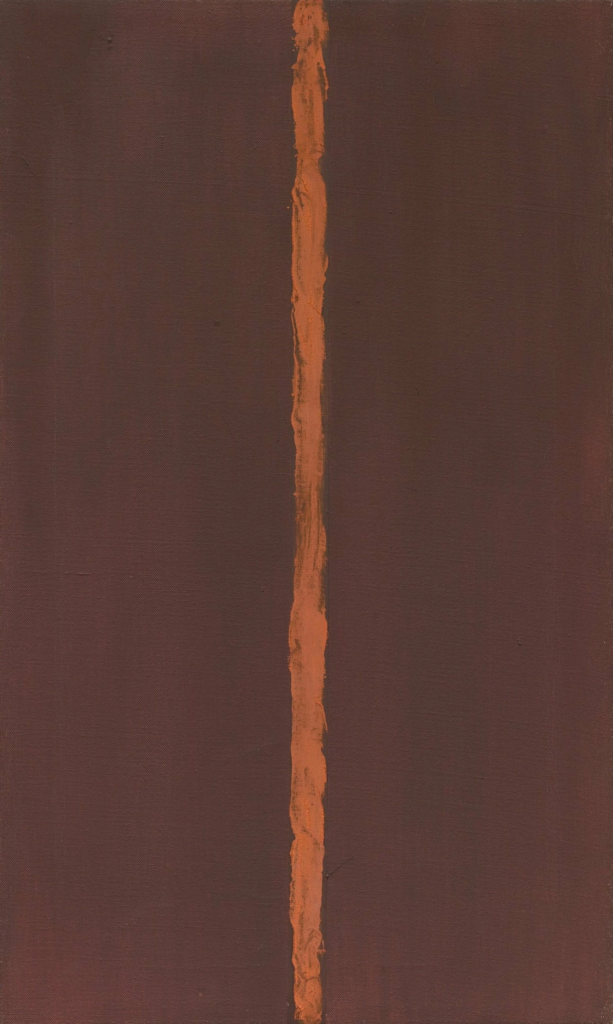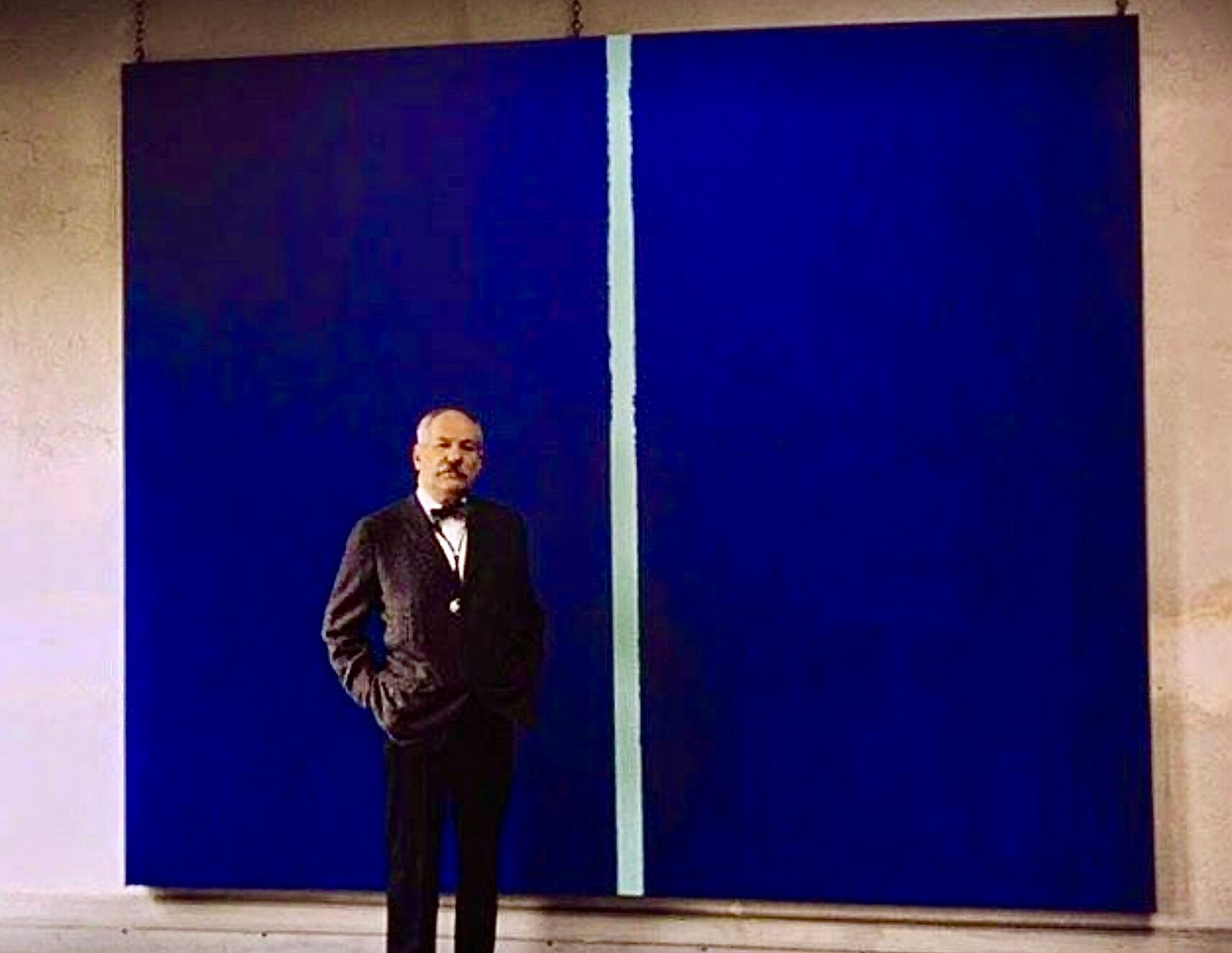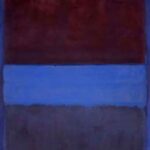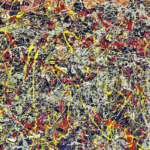Color Field Painting
Color Field Painting emerged as a distinctive movement within Abstract Expressionism during the mid-20th century. While Abstract Expressionism is often associated with the vigorous, gestural works of artists like Jackson Pollock and Willem de Kooning, Color Field Painting offered a quieter, more meditative approach. This movement focused on large expanses of color applied in a way that emphasized flatness and chromatic purity, creating immersive visual experiences. This article delves into the origins, key characteristics, prominent artists, and the lasting impact of Color Field Painting.

Origins and Development
The roots of Color Field Painting can be traced back to the late 1940s and early 1950s. The term “Color Field Painting” was coined by art critic Clement Greenberg in the 1950s to describe the work of artists who moved away from the gestural abstraction of the New York School. These artists sought to explore the emotional and expressive potential of color.
The movement was influenced by earlier European modernists like Henri Matisse and the Fauves, who used bold, flat areas of color. However, Color Field painters took this concept further, often eliminating recognizable forms and focusing entirely on color and spatial relationships. This approach was seen as a response to the chaotic, war-torn world of the mid-20th century, offering a form of visual tranquility and spiritual reflection.
Key Characteristics
1. Large Scale: Color Field paintings are typically large, enveloping the viewer and creating a sense of immersion. The scale of these works is crucial, as it allows the color to dominate the viewer’s field of vision, encouraging a direct emotional response.
2. Flatness: Emphasizing the two-dimensionality of the canvas, Color Field painters often eschewed any sense of depth or perspective. This flatness was a deliberate move away from the illusionistic traditions of Western art.
3. Pure Color: The use of color in these works is often pure and unmodulated. Artists would apply large, unbroken areas of color to create a sense of expansiveness and to evoke emotional responses. The colors themselves, rather than any representational content, become the primary focus.
4. Minimal Gesture: Unlike the vigorous brushstrokes of Action Painting, Color Field Painting employs minimal gesture. The application of paint is often smooth and even, with little evidence of the artist’s hand.
5. Meditative Quality: The contemplative nature of these works encourages prolonged viewing. The expansive fields of color invite viewers to lose themselves in the work, promoting a meditative, introspective experience.
Prominent Artists
Mark Rothko (1903-1970)
Mark Rothko is perhaps the most renowned Color Field painter. His works, characterized by large, luminous rectangles of color, sought to convey profound emotional and spiritual experiences. Rothko’s paintings often feature subtle gradations of color, creating a sense of depth and movement despite their flatness. Notable works include “No. 61 (Rust and Blue)” (1953), “No. 14” (1960), and the series of murals for the Rothko Chapel in Houston, Texas (1964-1967).
Rothko’s approach to color was deeply influenced by his belief in the transformative power of art. He sought to create works that would evoke a sense of the sublime, drawing viewers into a space of contemplation and emotional resonance. His use of color was not merely decorative but intended to provoke a profound, almost spiritual response.
Barnett Newman (1905-1970)
Barnett Newman is another key figure in Color Field Painting. His signature “zip” paintings feature vertical bands of color that divide the canvas, creating a sense of spatial tension and rhythm. Newman’s use of color and form was rooted in his philosophical and spiritual beliefs. He saw his work as a means of expressing universal truths and existential concerns. Notable works include “Onement I” (1948), “Vir Heroicus Sublimis” (1950-1951), and “The Stations of the Cross” series (1958-1966).
Newman’s paintings are characterized by their simplicity and austerity. The “zips” are not merely compositional devices but are imbued with symbolic meaning. For Newman, these vertical lines represented moments of revelation and the presence of the divine.
Clyfford Still (1904-1980)
Clyfford Still’s work is marked by its rugged, textured surfaces and bold, jagged forms. Unlike Rothko and Newman, Still’s paintings often contain dynamic, irregular shapes that seem to erupt from the canvas. His use of color is intense and dramatic, with sharp contrasts that create a sense of movement and energy. Notable works include “1957-D No. 1” (1957), “PH-1123” (1956), and “PH-401” (1957).
Still’s paintings are deeply personal and expressive. He sought to convey a sense of the sublime through his work, capturing the raw, elemental forces of nature. His use of color and form is both powerful and evocative, creating a sense of awe and wonder.
Helen Frankenthaler (1928-2011)
Helen Frankenthaler played a crucial role in the development of Color Field Painting with her innovative “soak-stain” technique. By pouring thinned paint onto unprimed canvas, she created ethereal, flowing shapes that merged with the fabric of the canvas. This method allowed for a greater sense of fluidity and spontaneity. Notable works include “Mountains and Sea” (1952), “Interior Landscape” (1964), and “The Bay” (1963).
Frankenthaler’s approach to color was intuitive and experimental. Her paintings are characterized by their lyrical, organic forms and subtle variations in tone. She often drew inspiration from nature, translating her impressions of landscapes and seascapes into abstract compositions.
Morris Louis (1912-1962)
Morris Louis is known for his large, vibrant paintings created using a technique similar to Frankenthaler’s. He would pour and manipulate acrylic paint on the canvas to create cascading fields of color. His works, such as the “Veils” and “Unfurled” series, are celebrated for their luminous, translucent qualities. Notable works include “Alpha-Pi” (1960), “Where” (1960), and “Saraband” (1959).
Louis’s paintings are characterized by their sheer, luminous layers of color. His technique of pouring paint allowed for a fluid, organic interplay of hues, creating a sense of movement and depth. His works are both vibrant and serene, inviting viewers to experience the emotive power of color.
The Legacy of Color Field Painting
Color Field Painting had a significant impact on subsequent generations of artists and movements. Its emphasis on color and flatness influenced Minimalism and later developments in abstract art. The movement also contributed to a broader understanding of the emotional and expressive potential of color.
Minimalism and Post-Painterly Abstraction
The minimalist movement of the 1960s and 1970s drew heavily on the principles of Color Field Painting, particularly its focus on purity and simplicity. Artists like Ellsworth Kelly and Frank Stella adopted the use of large, unmodulated fields of color, stripping away any remaining vestiges of representation.
Post-Painterly Abstraction, a term coined by Clement Greenberg in 1964, describes a group of artists who took the ideas of Color Field Painting even further. These artists, including Kenneth Noland and Jules Olitski, explored the optical effects of color and the physical properties of paint, creating works that were even more reductive and focused on pure visual experience.
Contemporary Art
The influence of Color Field Painting can be seen in the work of many contemporary artists. The exploration of color, form, and spatial relationships remains a central concern for many abstract painters today. Artists such as Sean Scully, Anish Kapoor, and Katharina Grosse continue to explore the possibilities of color and its emotional impact, building on the legacy of the Color Field painters.
Art and Meditation
The meditative quality of Color Field Painting has also found resonance in contemporary practices that emphasize mindfulness and introspection. The Rothko Chapel, for instance, continues to be a place of contemplation and spiritual reflection, attracting visitors from around the world who seek solace and inspiration in Rothko’s paintings.
Conclusion
Color Field Painting represents a pivotal moment in the history of abstract art. By focusing on the expressive potential of color and the flatness of the canvas, artists like Mark Rothko, Barnett Newman, Clyfford Still, Helen Frankenthaler, and Morris Louis created works that continue to captivate and inspire viewers. Their contributions to the field of art have left an enduring legacy, influencing subsequent movements and shaping our understanding of the emotional and spiritual power of color. As we continue to explore the possibilities of abstract expression, the lessons and innovations of the Color Field painters remain as relevant and impactful as ever.



